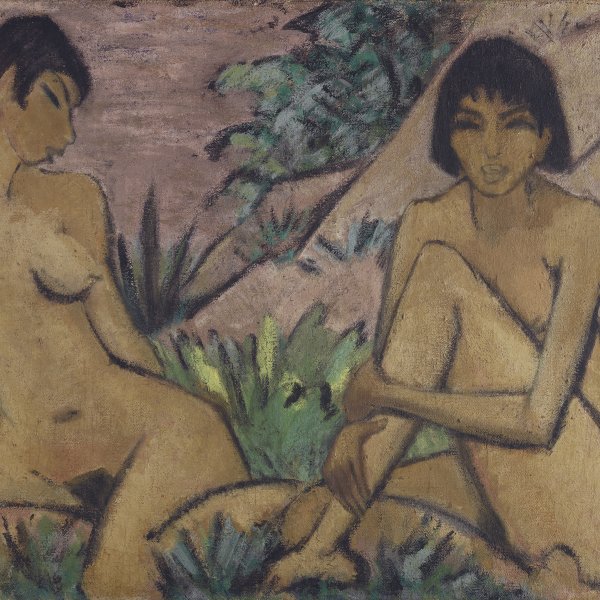Otto Mueller
Born in the village of Liebau in the Sudetes mountains, the German painter Otto Mueller trained as a lithographer at a workshop in the town of Gölitz, in Silesia. He went to Dresden in 1894 to study at the Kunstakademie and moved to Berlin in 1908. There he was involved in the establishment of the Neue Sezession during 1910 and met some of the members of the Expressionist group Die Brücke (The Bridge), which he joined. In 1911 he travelled to various places with Ernst Ludwig Kirchner and Erich Heckel, including Bohemia and the island of Fehrmarn in the Baltic Sea. The three of them exhibited in two of the group’s important shows: at the Galerie Arnold in Dresden in 1910 and at Fritz Gurlitt’s gallery in Berlin in 1912. In 1919, after being discharged from the army, he moved to Breslau, where he taught at the Kunstakademie until his death in 1930.
Mueller sought harmony between man and nature. The Arcadian tone of his works is a far cry from the interests of the rest of the Die Brücke artists, who were much more concerned with the everyday world and the perception of early twentieth-century cosmopolitan life. After travelling to Romania, Bulgaria and Hungary during the 1920s, he produced many works portraying people belonging to the gypsy ethnic group, which fuelled the legend of his possible gypsy origins.
His work, which he rarely dated and of which he destroyed an indeterminate part, was notable for its use of line and pursuit of the two-dimensional quality of the canvas. His interest in achieving a matte result in his painting drove him to experiment with tempera, an aspect in which he influenced the rest of the group.





